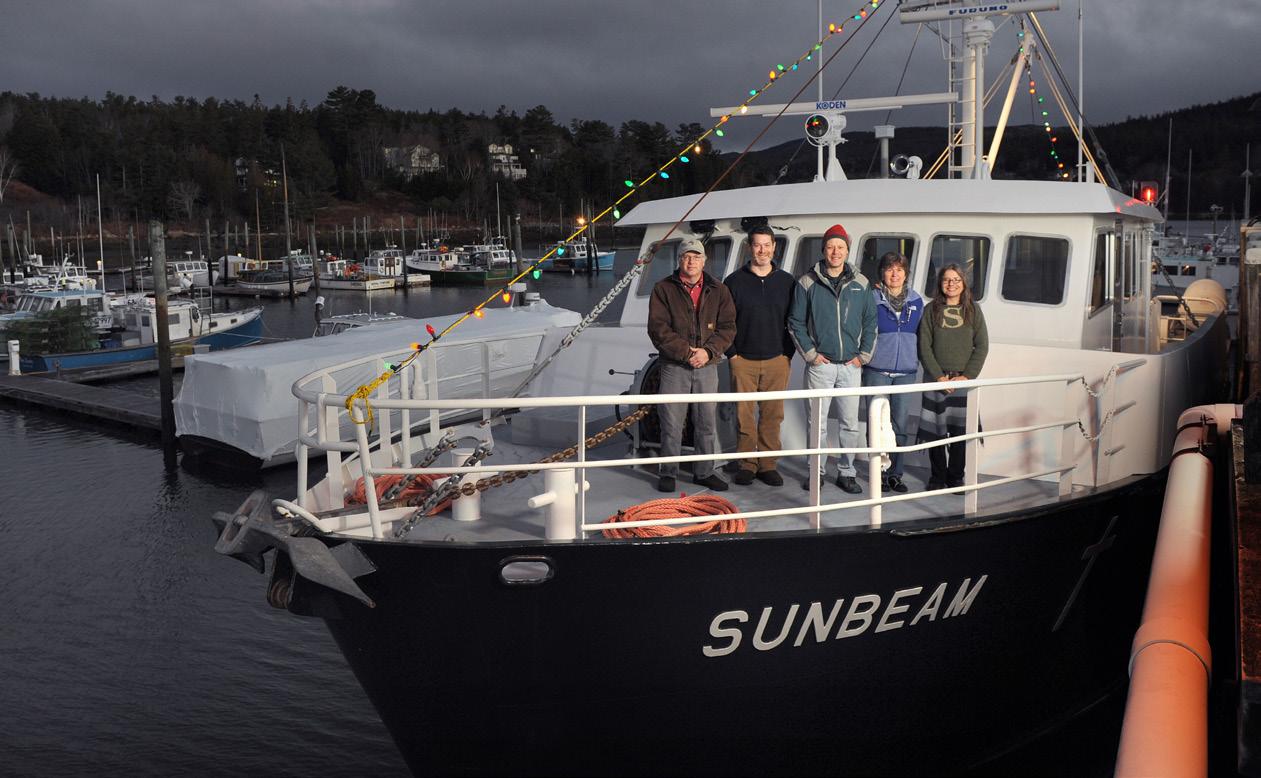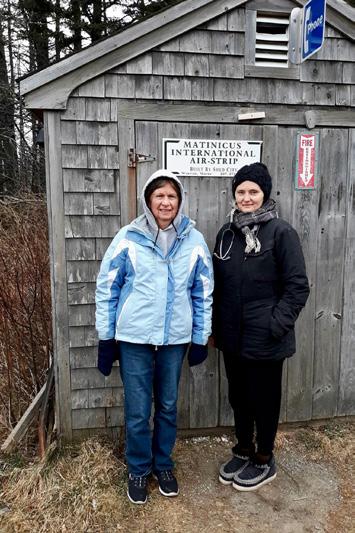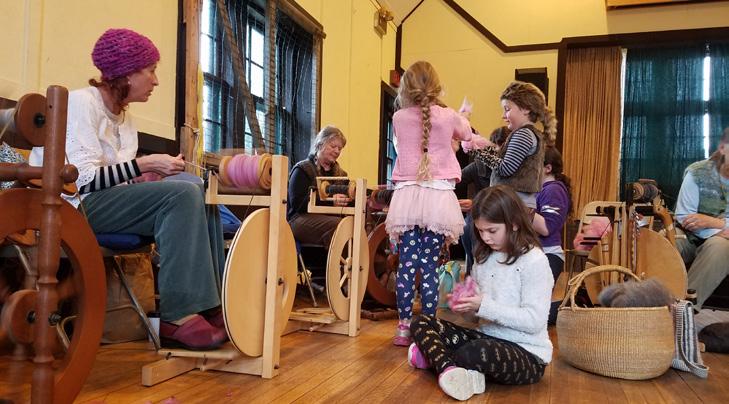
4 minute read
Maine Seacoast Mission
from March
BRINGING CARE, SUPPORT, AND CHEER TO MAINE’S ISLAND COMMUNITIES By Sheila D. Grant
Above: Engineer Storey King, Director of Island Outreach/Chaplain Douglas Cornman, Captain Michael Johnson, Director of Island Health Sharon Daley, and Steward Jillian aboard the Sunbeam.
Advertisement
Many Mainers have not heard of the Maine Seacoast Mission, but for island residents, the organization provides caring, community, and year-round support. It all began 115 years ago, when Mount Desert Island pastors and brothers, Alexander and Angus MacDonald, sailed a small sloop to islands and lighthouses in an effort to relieve the desolate conditions often found there.
With funding from wealthy acquaintances, the duo founded the Maine Seacoast Mission in 1905. Ever since, the organization has delivered medical care, spiritual guidance, holiday gifts, and more to the islands.
“I’ve been part of the crew for the past five years,” said Douglas Cornman, 52, Director of Island Outreach/Chaplain. Mike Johnson, 51, is captain of the Sunbeam; Storey King, 51, is its engineer; Jillian, 53, who uses no surname, is the steward; and Sharon Daley, RN, is director of island health services.
Cornman’s job is to help islanders access programs and activities that might otherwise be difficult to obtain due to geography, and to encourage a strong sense of community. Overall, the creative arts psychotherapist’s focus is on the spiritual health, as well as the mental, emotional, and behavioral health, of the residents of Islesford, Great Cranberry, Frenchboro, Isle au Haut, Matinicus, Monhegan, and Vinalhaven islands.
“Within that focus, I do a wide variety of things,” he said. “I lead worship on the islands, particularly in the fall, winter, and spring when the communities don’t have seasonal ministers that come to lead worship in the churches.”
The Mission is a nondenominational Christian organization, Cornman said. “Not everyone on the island now is a Christian. So, I will do an interfaith service, trying to make it as inclusive as possible, but still have it be meaningful.” This type of service “brings together people from diverse backgrounds to listen to one another and realize what they have in common,” he said.
Island living comes with special challenges Cornman teaches creative movement and dance classes at the K–8th grade schools on the islands. He also helps prepare middle schoolers for a challenging transition. Many island children attend one-room schoolhouses. They may be the only student in their grade, or the only middle schooler in a student body of five or six. But to attend high school, students must board with people on the mainland, commute by boat (if a daily ferry is even available on their island), have a parent or family relocate to the mainland, or attend boarding school rather than public high school.
Entering high school is fraught with anxiety for most teens, and even more so for island students transitioning from tiny classrooms to schools with hundreds of students. “The interpersonal dynamics are so different for these students. It’s a totally different world for them to navigate,” he said.
“The Mission also tries to bring the islands together. The schools do a great job using technology for remote classrooms,” Cornman said, “but students and other islanders benefit from meeting face-to-face.” The Sunbeam shuttles students among islands for sporting events, and island residents from one island to another for a variety of inter-island events.
The captain and engineer see to safe passage for everyone aboard. The Sunbeam can cut through 12 inches of ice, keeping lanes clear for mail boats and ferries. The steward, who Cornman calls “the director of hospitality,” not only feeds the crew, but keeps three cookie jars stocked and the coffee on for islanders who want to visit aboard.
“That’s a huge part of our service to an island,” Cornman said. “Folks will come onboard to have a meal or sit and have a cup of coffee, and we start talking with them. Sharon and I are listening with intention, to see if we can’t help the person out in some way. Often, that’s one of the greatest services, to be present and let them know we care for them and that they have someone they can turn to when they have a need. It provides a sense of security and hope when you know that a whole group of people out there really care for you.”
He does home visits to “check up on them, see how they’re doing, sit and have a chat with them. We make sure they can get to and be part of whatever we do on the island. If they need help getting there or any kind of accommodation, we try to make sure that happens. Keeping seniors connected benefits everyone in the community,” he said.
“I think the most important work of the Mission is demonstrating that we care about the islands, the people on the islands, and that we care about them living together in community,” Cornman concluded. “All the work we do, whether spiritual, related to traditional health or emotional health, all focuses on letting people know that we care about them.”
The work of the Maine Seacoast Mission is largely funded through private donations. For more information, visit www.seacoastmission.org.

Above: The Sunbeam brought a group of yarn spinners to the island to do a demonstration. Pictured is a Wednesday Spinners group on Isle au Haut. Left: Sharon Daley, RN, and Jennifer Desmond of Island Community Medical Services at the Matinicus air strip during a telemedicine trip.











